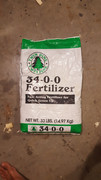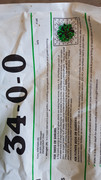If you live in the transition zone, I don't think you need to be concerned as much with the inclusion of potassium in some if he big box store fertilizers.
The studies people reference are really aimed at the northern lawns that see long periods of snow cover on the turf. The snow acts as insulation, protecting the turf from drying winds and actually keeping things warmer than if there wa no snow over.
However, the long period of snow over also means that there is no air circulation; moreover, there is constant period of moisture as the snow melts. I think that the insulation/heat + lack of airflow + constant moisture = breeding ground for disease. Somehow, Potassium multiplies that (but it's unclear HOW).
If you live in the transition zone, I think that the potassium would actually benefit your turf as much as nitrogen. The grass here doesn't stop growing like it does in the North... I usually cut my Central VA lawn even in January. Our "winter" here is usually mid January through late February/early March.
Without the insulation of snow, your turf will be more exposed to the drying winter winds. I think the Potassium would benefit the turfs ability to survive as much as Nitrogen. You aren't going to really have any other time to apply Potassium other than the Fall in the transition zone because you do NOT want to feed in the spring or summer. If you do, you would only want to feed something organic & light (like Milorganite --- which doesn't have potash).
[ Post made via iPhone ] 



